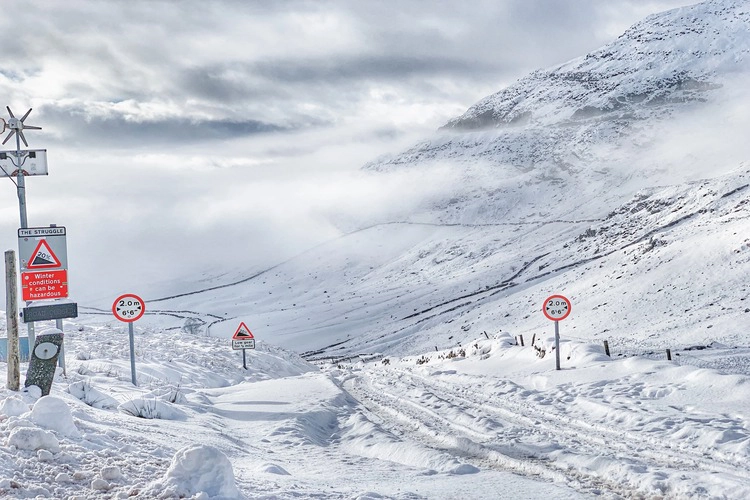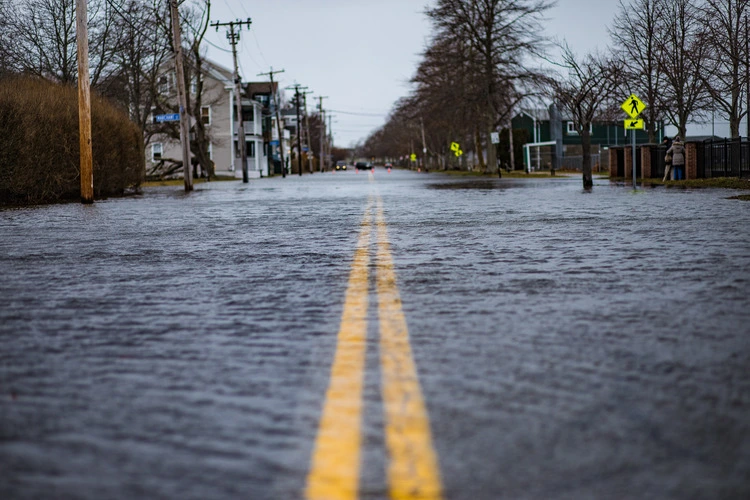
Discover the significant consequences if one of the world’s most important ocean currents – The Gulf Stream – were to collapse
By
Originating in the Caribbean, the Gulf Stream is a vital ocean current responsible for bringing heat from the tropics to higher latitudes.
The current is part of the Atlantic Meridional Overturning Circulation – or AMOC for short – which comprises many other currents that work together to form a ‘global conveyor belt’ that shifts sediment, organisms and heat across various parts of the world.
But the potential for it to collapse is becoming more and more likely.
Enjoying this article? Check out our related reads:
- Investigating climate change’s impact on the oceans
- Geo explainer: Ocean currents – how do they work & why are they important?
Earlier this month, 44 scientists published an open letter to seek urgent action for the weakening AMOC ocean circulation in the Atlantic, describing the ‘devastating’ and ‘irreversible’ effects that it would have across the world, but particularly in the Nordic countries of Denmark, Iceland, Norway, Finland and Sweden.

The combined effects of more freshwater from increased rainfall, melting ice and river runoff is becoming more likely to push AMOC to an irreversible tipping point.
A full collapse of the AMOC has happened before, during glacial periods in which ice sheets covering the planet were melting. The influx of freshwater slowed the circulation down and led to extreme climate fluctuations.
So what consequences would the Earth face if the AMOC – and along with it, the Gulf Stream – were to collapse today? Here we discuss some of the major impacts that would be felt across the world:
Rising sea levels
On top of the effects that would be caused by a collapsing AMOC and Gulf Stream, sea levels across the world are already rising due to climate change.
As of 2021, the melting of the Greenland Ice Sheet added an estimated 400 billion tons of water to the North Atlantic each year. This melting, combined with warming temperatures, means sea levels are expected to rise around the world by more than half a metre by 2100.

But if the Gulf Stream were to collapse, a recent study by NOAA highlighted just how devastating its impacts would be compounded by the already-existing effects of climate change. The US’s East Coast would be vulnerable to rising sea levels and even flooding. Warming waters, which expand and increase sea levels, would stay around the East Coast rather than flowing northward as the Gulf Stream would usually carry them.
The subsequent effects of these rising sea levels is vast: without warm water flowing toward the Arctic, winter sea ice could expand as far south as England.
More extreme winters & weather events
If the AMOC and Gulf Stream were to collapse, temperatures would plummet by an average of 3.4C in the UK, and an average of 10–15C across Europe. That’s because these currents are responsible for shifting huge quantities of heat up to Northern Europe, typically keeping this part of the continent warmer than other places as far north. It is the region most affected by the Gulf Stream’s flow of water.
Harsher and more extreme winter conditions would occur particularly across northern areas of Britain, with snow accumulating at levels that the country would struggle to deal with.
Storms would also be a more common occurrence in Europe.
Elsewhere on the planet, temperatures would increase particularly in the southern hemisphere and tropics. As the Gulf Stream would be unable to move this warmth northward, it would instead accumulate here.
Researchers at UCL are currently working on models to further understand exactly how weather patterns will be affected by a shift or change in the AMOC and Gulf Stream. Current models are imperfect, and not yet precise enough to understand future impacts of reaching a tipping point in the Gulf Stream. It is hoped the use of machine learning and research computing will allow researchers to improve their ability to make real-time predictions of the weather.
Ecological and agricultural changes
If the Gulf Stream collapsed, changes in the position of major rainfall could occur, such as those in India, South America and West Africa. This regular rainfall is relied upon for successful crop harvests, and without it could result in food insecurity for billions of people across the world.
Another knock-on effect from changing weather patterns caused by a Gulf Stream collapse would be the viability of the Amazon Rainforest. Already faced with the threat of declining rainfall, the rainforest could experience a shift from forest into grassland if rainfall did move away from the region.
As a result of this shift, carbon would be released from trees – once vital carbon sinks – and instead enter the Earth’s atmosphere, further exacerbating the planet’s warming temperatures.

In the UK, precipitation could fall by 123mm each year, reducing the percentage of land able to be used for farming from 32 per cent to just 7 per cent. To offset the lack of rain, farmers would have to use costly irrigation that would be ten times the value of crops produced.




